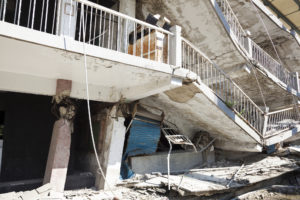[youtube]https://www.youtube.com/watch?v=lFlR98Gm6MM[/youtube]
How to Talk to Your Children after the Nepal Earthquake and Calm Their Anxiety about a Natural Disaster
This week I was asked to speak on Breakfast TV, Vancouver about the impact of the earthquake in Nepal on our children. It was a short five minute interview and with this being my first television experience, I put my own recommendations for calming anxiety to the test!
Top Tips to Remember after a Natural Disaster
- Limit media exposure both television and radio – children are not able to understand and process everything they see and hear, and thus become more scared and confused as they don’t have all the information
- Be the source of accurate information for your children – ask them what they have already seen and what they already know, and then with this starting point, fill in the missing pieces for them, by being honest but keep it basic and don’t go into upsetting details
- Create an opportunity for them to ask questions
- “Feelings First, Logics Last” ~ as my saying goes, it’s really important to validate the thoughts and feelings first and then move into problem solving and solutions
- Monitor for signs of anxiety – persistent physical pains such as headaches/stomach aches that don’t seem to have a medical explanation, sleep disturbances, separation anxiety (they want to be by your side and they don’t want you to go out), lots of questions about death
- Seek help from a Registered Clinical Counsellor or Registered Psychologist if your child is showing ongoing signs of anxiety
- Model healthy coping skills – if children overhear you speaking to another adult and expressing distress they will absorb this
- Give more attention and support to children who are already highly anxious, highly sensitive, or have experienced previous trauma or losses in their lives
- Don’t make false promises that we will never experience an earthquake but do reassure them that their school has an emergency plan, and as a family, that you have a plan and an emergency kit. (If you don’t yet have a plan and a kit, this is a really good time to create one. St. John Ambulance has a list of recommendations and excellent pre-made kits that you can order and have shipped free to your home in most areas of Canada, if you spend $100+ Now there’s no excuses!)
Top Tip for Calming Anxiety in General
- Help your child stay in the present. Anxiety is about fear of what could happen in the future. We don’t know that the future holds, so stay with the facts we have about this moment right now. What is the evidence that we can see around us right now? What is the previous history about how often this has happened in the past?
When we experience a devastating natural disaster in the world, such as the Nepal earthquake, this can change a child’s whole view of his/her world. What may have once seemed like a safe world, may now be thought of as a fearful world. By discussing your family’s emergency plan, this helps a child to feel more safe and secure. Also, finding a concrete way to help the people in Nepal through a fundraiser, or supporting one of the Aid organizations, can help a child feel less helpless and out of control.
For more strategies on how to help your anxious child, I have one space left in each of my upcoming “Brain Science” groups which teach children (and parents in the parent feedback group) about anxiety and anxiety management strategies. Groups are for children ages 7-9 yrs. and 10-12 yrs. Please register on-line through the ABLE Clinic form and for more information, view this flyer on Anxiety.
Warmly,
Want to Connect?
Subscribe now to receive free weekly parenting tips and inspiration.








